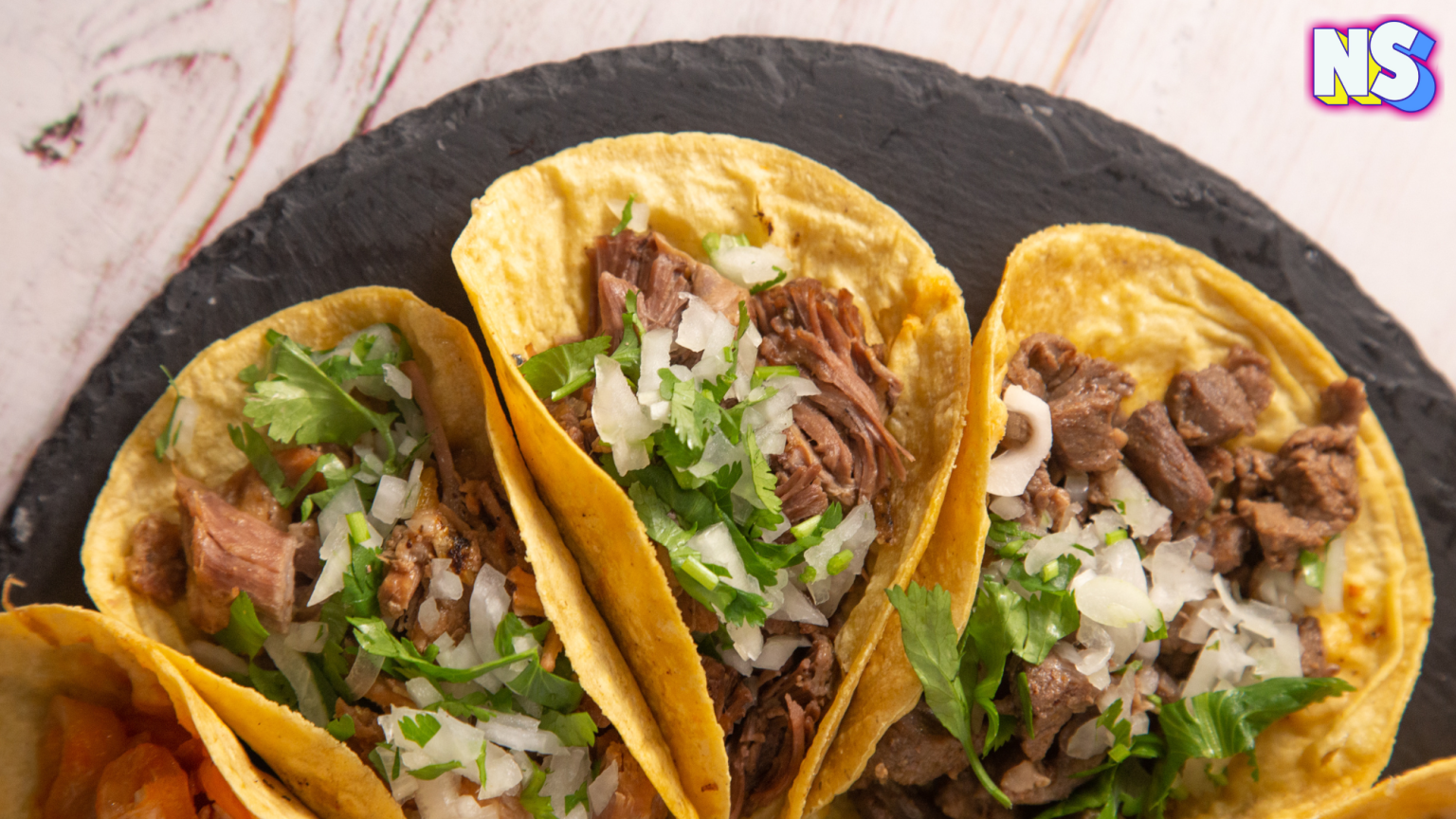Tacos are much more than just a quick bite — they are a cornerstone of Mexican cuisine and culture, with deep historical roots. Originating in Mexico long before Spanish colonization, the taco is believed to have been a practical way for indigenous people to carry food. Early tacos likely featured fish or insects wrapped in a soft corn tortilla, a tradition still honored in some regions of Mexico today.
The word “taco” is thought to have come from the Nahuatl language, spoken by the Aztecs. However, the modern taco — filled with meats, vegetables, and topped with salsa — took form as culinary influences evolved, especially after the introduction of domesticated animals and new cooking methods during the colonial period.
Tacos made their way to the United States in the early 20th century, introduced by Mexican immigrants. As they gained popularity, regional variations began to appear, from Tex-Mex crispy shell tacos to California’s fish tacos. Today, tacos are enjoyed globally, celebrated in everything from food trucks to fine dining establishments.
What makes tacos so unique is their versatility. They reflect regional ingredients, cooking styles, and cultural preferences. Whether you’re eating carne asada tacos in Los Angeles or birria tacos in Guadalajara, each bite tells a story.
Exploring Different Types of Tacos and How to Enjoy Them
There are countless types of tacos to explore, each offering a different taste and texture. Below are some of the most popular varieties:
1. Street Tacos
Often served in small, soft corn tortillas, street tacos are packed with seasoned meats like carne asada (grilled beef), al pastor (marinated pork), or pollo (chicken). These tacos are usually topped with chopped onions, cilantro, and a squeeze of lime.
2. Fish Tacos
Originating in Baja California, fish tacos use grilled or fried fish, topped with cabbage slaw and creamy sauce, often served in a flour tortilla. They are a coastal favorite, blending Mexican flavor with fresh seafood.
3. Barbacoa Tacos
Barbacoa refers to slow-cooked, spiced beef (or sometimes lamb or goat). These tacos are rich, juicy, and typically served with pickled red onions and spicy salsa.
4. Breakfast Tacos
A Tex-Mex staple, breakfast tacos include scrambled eggs, cheese, bacon or sausage, and potatoes, all wrapped in a warm tortilla. They’re perfect for starting the day with a hearty, flavorful meal.
5. Vegetarian and Vegan Tacos
Plant-based tacos are becoming increasingly popular. Fillings include roasted vegetables, beans, tofu, or jackfruit, offering flavorful and healthy alternatives to meat-based tacos.
6. Birria Tacos
A current internet sensation, birria tacos are made with slow-cooked beef in a rich, spicy broth. The tacos are dipped in the broth (consommé) and grilled until crispy. They are typically served with a cup of consommé for dipping.

Tips to Enjoy Tacos Like a Pro:
- Choose the Right Tortilla: Corn tortillas are traditional and gluten-free, while flour tortillas are soft and perfect for burrito-style tacos.
- Don’t Overstuff: Less is more. A well-balanced taco lets each ingredient shine.
- Top with Freshness: A splash of lime, a sprinkle of cilantro, or a dollop of salsa can enhance the flavor dramatically.
- Eat Immediately: Tacos best enjoyed fresh, while the tortillas warm ingredients are crisp.
The Global Rise of Taco Culture
Thanks to globalization and social media, tacos have become a worldwide phenomenon. Food trucks, Instagrammable taco plates, and gourmet taco restaurants have propelled this simple dish into a symbol of culinary creativity.
In the United States, Taco Tuesday is now a weekly celebration in many households and restaurants. This tradition encourages people to explore different taco recipes and toppings every week, making it both a cultural event and a culinary exploration.
Additionally, tacos are becoming central to fusion cuisine. You’ll find Korean BBQ tacos, Indian curry tacos, and even sushi tacos in major food hubs across the world. These fusion creations maintain the taco’s structural essence while pushing flavor boundaries.
Moreover, tacos have found a special place in vegetarian and vegan communities. With innovative fillings like jackfruit “carnitas” or walnut “chorizo,” tacos can be inclusive and satisfying for all dietary preferences.
Conclusion: Why Tacos Will Always Be Loved
Tacos have stood the test of time not just because of their taste, but because of what they represent — adaptability, community, and culture. Whether eaten on the streets of Mexico City or at a high-end restaurant in Tokyo, tacos continue to captivate the taste buds and hearts of people around the world.
Their simplicity allows endless customization, making tacos the perfect food for any occasion — from casual gatherings to festive celebrations. If you haven’t already explored the world of tacos beyond the fast-food version, now is the time to dive in and discover all the flavors and stories this iconic dish has to offer.
